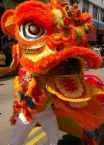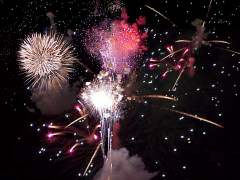Celebrations in January
Jan. 1 – New Year’s Day
Jan. 1 – or lunar new year. Korea celebrates Solnal – the biggest holiday of the year
Jan. 5 – Twelfth Night (The 12 night after Christmas) Celebrated in Europe where people go out to sing and drink to the health of their friends, family, pets and crops.
Jan. 6 – Epiphany or 3 Kings Day marks the end of the Christmas season (12th day) and is believed to be when the 3 wise men arrived in Bethlehem to worship Jesus. In Mexico, 3 kings day is considered a holiday. Children put their shoes under the Christmas tree and wake to find them filled with presents of toys and clothes.
January 6th is a celebration in Venezuela called La Paradura del Niño. It is a celebration for Jesus as a baby, and Venezuelans place the baby from the manager on a blanket. Four people carry 1 corner of the blanket and hold a candle in the other hand and parade around the town with the baby.
January 7 – East Orthodox Christmas or Julian Christmas – celebrated in Ukraine & elsewhere.
January 15th is a day for celebration in Korean called Daeboreum. It is a celebration of the first full moon of the year and hope for a healthy year to come.
Jan 19 – Epiphany day for Ukrainians.
Jan 20 – USA - Dr. Martin Luther King, Jr. holiday (since 1986)
Jan 25 – Scotland - Scottish poet, Robbie Burns, was born on January 25, 1759. Scottish people celebrate his birth by eating Haggis and having bonfires.
Jan 26 – Australia – Australia commemorates the first European settlement in Australia in 1788.
Late Jan – early Feb – Indian and Hindu festival that is held in honor of the Hindu goddess of learning, Sarasvati.
January - India – Pongal celebrations are held in parts of India in January. Three days of celebrations are held when the new crop of rice comes in. Cows & bulls are painted festive colors.
Chinese New Year – Sun Nin. Chinese New Year is celebrated The Chinese calendar is lunisolar so it is based on the cycles of both the sun and the moon. The holiday is held between January 21 and February 20, depending on when the second new moon appears following the winter solstice.
On the Jewish calendar, New Years is celebrated 4 times. Once for the months, once for the creation of the world, once for the kings and once for the trees. The new years of the trees, or Chamishah Asar bi-Shevat, is celebrated in Israel in late winter when the trees are beginning to bloom.


